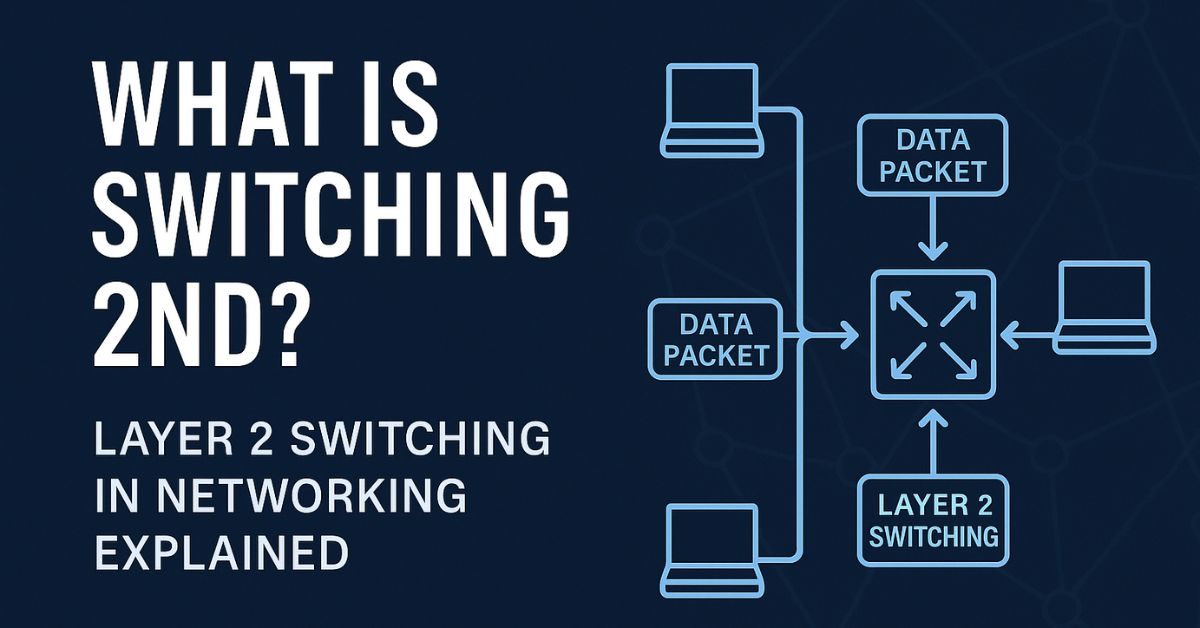Switching in networking plays a fundamental role in how data moves within a local area network (LAN). Specifically, Layer 2 switching, also referred to as Data Link layer switching, is a lightning-fast technique for forwarding data frames based on MAC addresses.
In this blog, we’ll decode what switching means in networking, explain how Layer 2 switches work, and explore why this method is a crucial pillar of modern IT infrastructure. This article is powered by NLP-focused language and rich LSI keywords to help you understand and rank better if you’re learning or blogging about networking.
What is Switching in Networking?
Switching is the process of transferring data packets between devices on a network by analyzing destination information. It ensures that your file transfers, video calls, and internet activity reach the intended device, fast and reliably.
There are different types of switching:
Circuit Switching
Packet Switching
Message Switching
But in this article, we focus on the most relevant in LAN environments—Layer 2 Switching.
Layer 2 Switching – Fast, Efficient, Reliable
Layer 2 switching takes place at the Data Link Layer (second layer of the OSI model). It uses the MAC address, a unique hardware identifier, to forward packets from one device to another without involving IP addresses.
How it works:
When a data frame enters a Layer 2 switch, it reads the destination MAC address, checks its MAC address table, and instantly forwards the frame out the correct port. This action is:
Hardware-based
Low latency
Doesn’t require routing logic
No need for IP lookups or subnetting
High-speed forwarding for LANs
Reduces broadcast traffic
Layer 2 vs Layer 3 Switching
| Feature | Layer 2 Switching | Layer 3 Switching |
|---|---|---|
| Works on | Data Link Layer (L2) | Network Layer (L3) |
| Uses | MAC addresses | IP addresses |
| Speed | Faster (no IP processing) | Slower (routing logic involved) |
| Devices used | Ethernet Switch | Layer 3 Switch / Router |
| Use-case | LAN switching | Inter-VLAN routing, WAN traffic |
| Configuration | Plug-and-play | Requires routing tables |
Why Layer 2 Switching is Crucial
Low Latency: Eliminates the need for CPU-intensive IP processing
Scalable: Easy to deploy in enterprise networks or home setups
Secure: Advanced switches support VLANs, port security, and QoS
Plug-and-play: Works automatically once devices are connected
Real-World Applications of Layer 2 Switching
Layer 2 switching is used in:
Office networks (to connect computers, printers, VoIP phones)
Home Wi-Fi routers with Ethernet ports
Smart buildings and IoT hubs
Data centers for fast internal communication
Gaming setups for ultra-low ping transmission
Final Thoughts
Layer 2 switching isn’t just an old-school term—it’s still the backbone of fast and efficient networks. Whether you’re building a small office network or managing a high-performance enterprise LAN, mastering the concept of switching at Layer 2 can unlock better speed, performance, and control.











